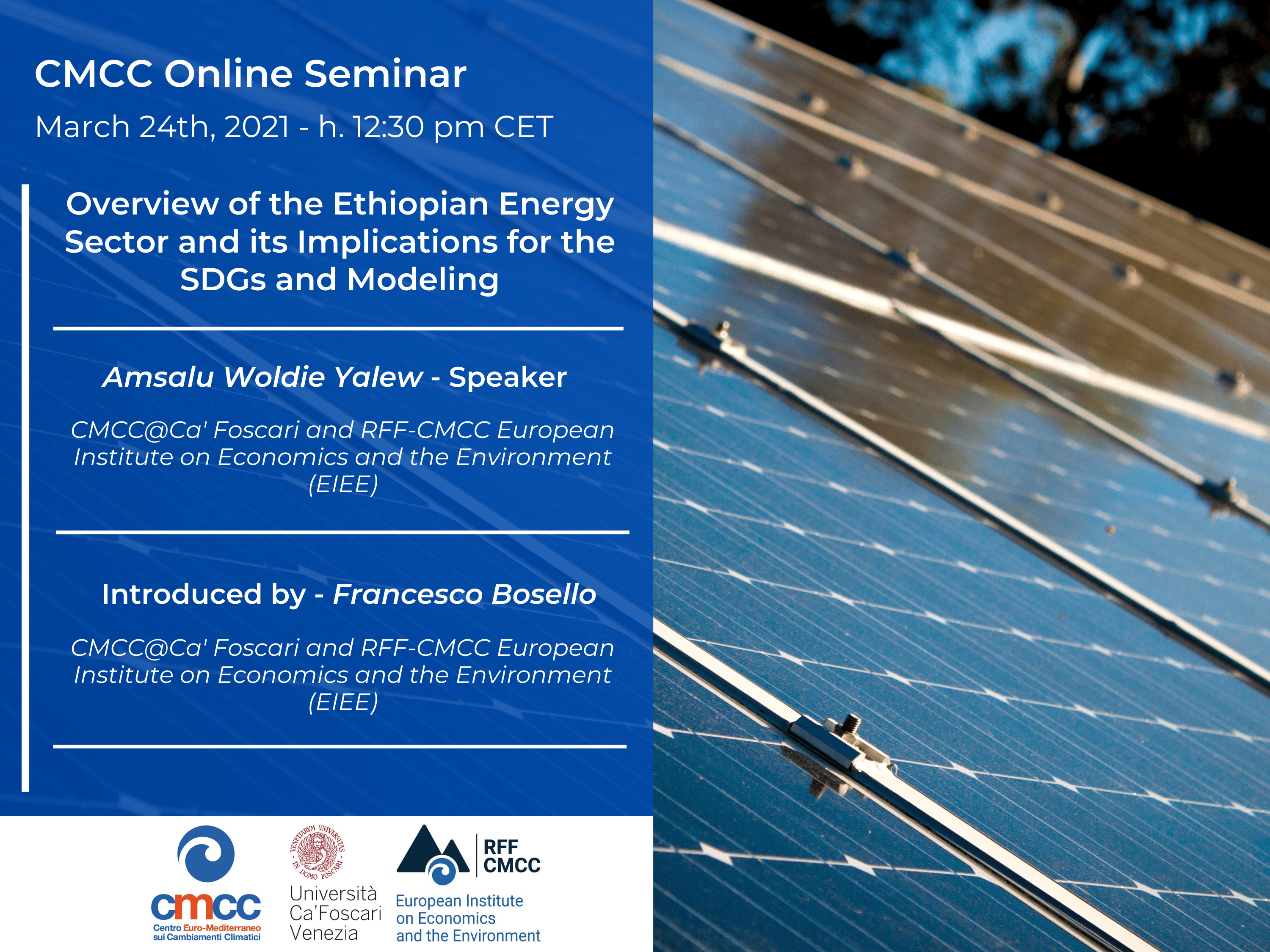CMCC Online Seminar
March 24, 2021 – h. 12:30 pm CET
Speaker:
Amsalu Woldie Yalew, CMCC@Ca’Foscari and RFF-CMCC European Institute on Economics and the Environment (EIEE)
Moderator:
Francesco Bosello, CMCC@Ca’Foscari and RFF-CMCC European Institute on Economics and the Environment (EIEE)

Abstract
The mix of energy is as important as energy supply in low-income countries striving for sustainable development. This is particularly important in Ethiopia which heavily relies on biomass energy. The per capita total primary energy supply in Ethiopia is about 0.4 toe. About 57 % of the total population have no access to any form of electricity. Ninety-five percent of the on-grid electricity comes from a single source, i.e., hydropower. Ethiopia also depends on imported fossil fuels which makes up to 10-14 % of the total imports. About 93 % of the households use solid biomass for cooking. Taken together, the current energy supply in Ethiopia is not only insufficient to drive the anticipated industrialization and urbanization but also susceptible to exogenous shocks such as climate variability and international oil price shocks. The current energy system also bears negative externalities to the environment and human health. About 46 % of the total emissions from the forestry sector (which contributes to 37 % of the total GHG emissions) accrue to forest degradation due to fuelwood consumption. Indoor air pollution is one of the major health problems causing more than 50,000 deaths annually and 5 % of the disease burdens in the country. Energy sector development therefore is a crucial step to advance the socio-economic status of the country. Considering this, modeling and long-term projections of the energy sector are highly needed to provide insights on alternative energy – supply and demand – pathways. For a meaningful policy impact, energy studies in Ethiopia should be able to assess the implications of alternative energy pathways to the macroeconomy and the environment. The existing literature is however tiny and fragmented. It mainly focuses on the consumption of a specific fuel type by the household sector. The interaction among different energy types and demand sectors as well as the feedbacks between energy and the macroeconomy are barely researched. This paper aims to contribute its part to the energy-economy-environment (E3) literature in Ethiopia. It attempts to shed light on the energy sector in Ethiopia. Taking this as a background, it then, stipulate an appropriate modeling approach and building a database to deal with the Ethiopian energy sector. It also discusses the need for energy transition and its linkages to almost all SDGs.
Watch the video:
ORGANIZED BY:
Fondazione CMCC – Centro Euro‐Mediterraneo sui Cambiamenti Climatici
RFF-CMCC European Institute on Economics and the Environment (EIEE)
Università Ca’Foscari Venezia

